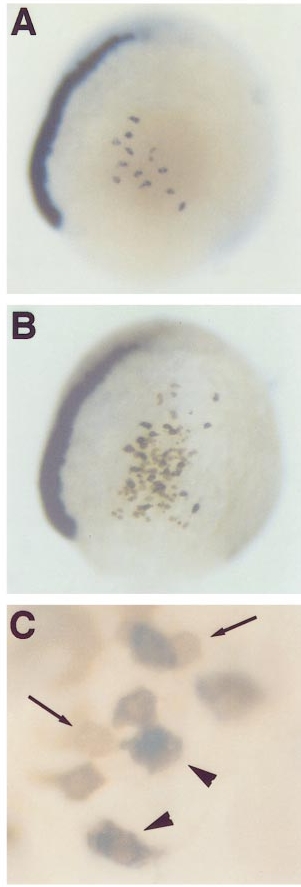Fig. 4 cas acts cell autonomously in the endodermal progenitors. A cas mutant host at 80% epiboly into which wild-type cells were transplanted contains several axial-expressing endodermal precursors in the lateral hypoblast (A). These cells all derive from the wild-type donor as they also contain the biotin dextran lineage tracer (brown stain in B); no mutant host cell was ever observed to form endoderm, as judged by axial expression. Under higher magnification (C) the presence of biotin dextran in the axial-expressing endodermal precursors is clearly seen (arrowheads indicate brown cells with purple cytoplasm); several cells not expressing axial also contain biotin dextran (arrows indicate brown cells). In 53 wild-type to wild-type control transplantations, we observed four cases in which transplanted cells formed axial-expressing endoderm (data not shown). Wild-type cells transplanted into cas mutant hosts formed axial-expressing endoderm in 5 of 77 cases (P = 0.5-0.9). cas mutant cells were never observed to form axial-expressing endoderm when transplanted into wild-type hosts (33 events; P < 0.1). (A, B) Right lateral views, anterior to the top; (C) high-magnification view of B.
Reprinted from Developmental Biology, 215(2), Alexander, J., Rothenberg, M., Henry, G.L., and Stainier, D.Y.R., casanova plays an early and essential role in endoderm formation in zebrafish, 343-357, Copyright (1999) with permission from Elsevier. Full text @ Dev. Biol.

